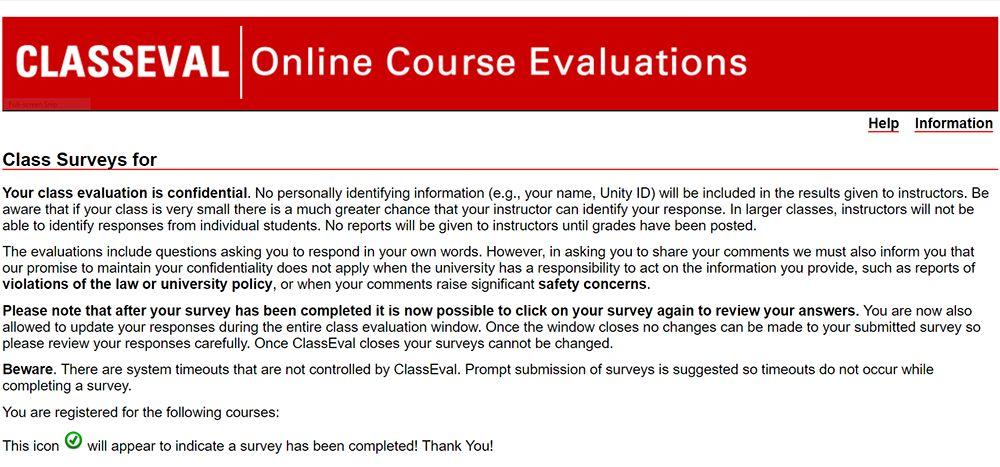NC State’s official system for student-reported teaching evaluations, ClassEval, has been troubled with low student participation, which limits the service’s usefulness.
ClassEval is intended to be a source of feedback to instructors, and is used to gauge performance for departments. At the end of a semester, students can submit comments and ratings online about their course experience.
Anna Howard, teaching associate professor at the Department of Mechanical and Aerospace Engineering, is the chair of the Evaluation of Teaching Committee (EOTC), which advises the provost on matters regarding ClassEval.
“The university has several standing committees of faculty across the campus who assist the provost in making decisions,” Howard said. “The standing committee for evaluation of teaching is tasked with, among other things, recommending to the provost how we should be evaluating teaching; one of those things is ClassEval.”
ClassEval’s goal is to ultimately see what’s being done well, but the current low response rates are troubling, according to Howard.
“Students right now are not taking advantage of that,” Howard said. “Our response rates are dropping every year. The faculty tend to think that’s student apathy, or perhaps [thinking] we’re not listening or nothing ever changes.”
Howard said that in her own experience, there has been a large drop in participation over the years. She had evaluations done on paper before ClassEval’s establishment, but once the process moved online, she has seen a much smaller percentage of her classes responding.
“My own personal rates went from 80 percent when we were doing it in paper to 85 percent the first year,” Howard said. “I’m just rounding these numbers off. Today I have to beg and plead to get 40 percent.”
She finds this bizarre, as online submissions were expected to be more accessible. This low response rate is the reason that ClassEval sends many emails to students. Howard said the intention is to just remind students to respond.
“We don’t want to badger you, we just don’t know what else to do,” Howard said. “There’s no confidence in the results when you have such low participation.”
Howard said that this low participation problem is made worse by the fact that some students quickly fill out the forms without any consideration, just to stop the emails ClassEval sends. Not only is this data useless, it can mess with genuine responses from other students, according to Howard.
“Not only is it not useful, it messes up the results,” Howard said. “Don’t screw up everybody else’s results; it’s very irresponsible.”
Suggestions from ClassEval can be good reminders for how to improve, according to Howard. David Sturgill, a teaching associate professor in the computer science department, agrees with Howard’s sentiments.
“Occasionally I’ll jump up to point something out on a slide,” Sturgill said. “I figure it’s part of the amusement of the class. But also, I might imagine it’s clear what I’m pointing to when I do that, and [in reality] it’s probably less clear than I imagine. Lots of people have reminded me of that.”
Howard said that after students requested more course materials through ClassEval, she provided resources, which have been well received.
“I started a library of videotaped example problems, and there are now over 300 of them available on my site,” Howard said. “Then, there were others that wanted more lecture material. I teach a flipped class, so they wanted that, and that led to the development of 5-minute topic videos that I’ve now shared all over the country.”
More information on the ClassEval system can be found on the NC State website. The link to ClassEval surveys can be found in emails sent out to students.








